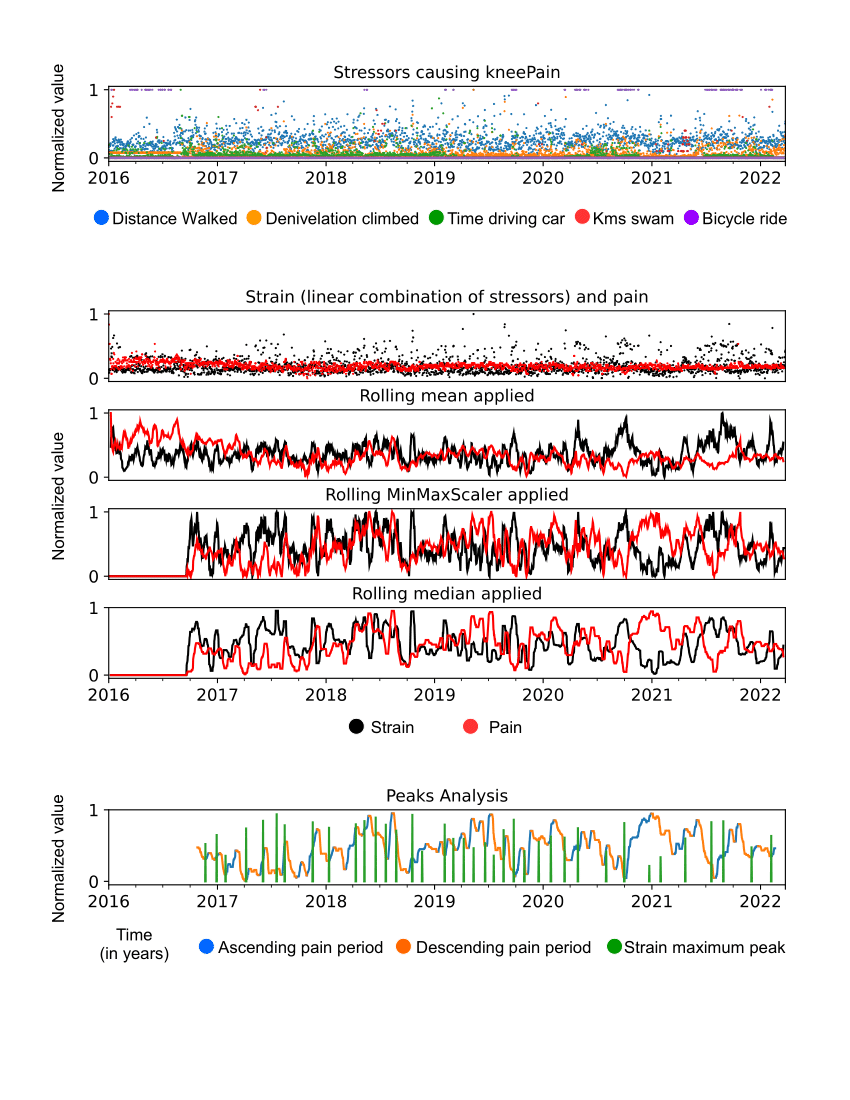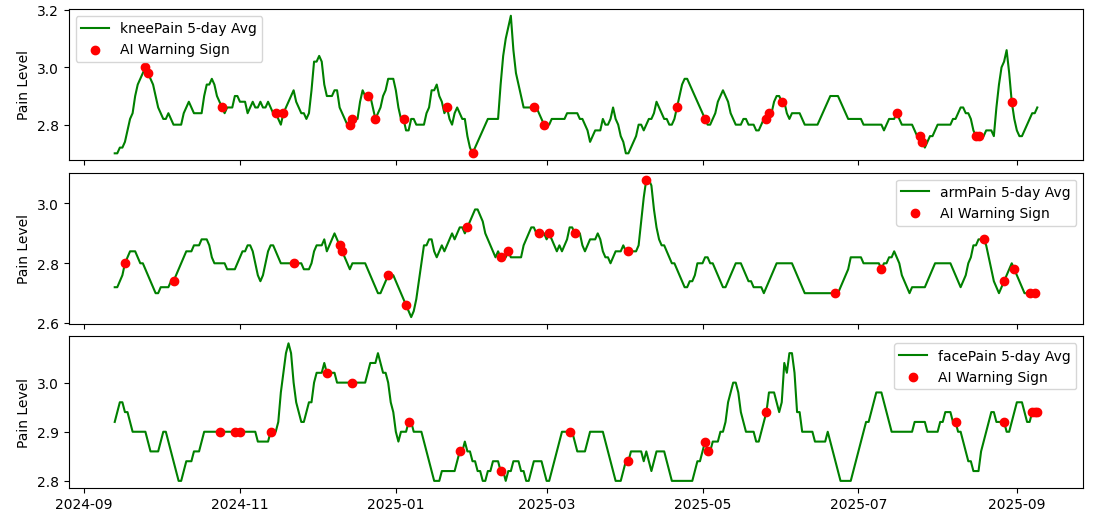First result: Exercise impacts pain with varying delays in some chronic pain patients
Our 2023 ResearchGate paper showed correlations between exercise and knee pain in three patients with chronic knee pain. Our analysis was based on big data (at the patient level), recorded daily for several years, and was thus the first study to examine those correlations in such fine granular detail.
We showed that exercise increases always preceded pain increases, but, as illustrated in the figure above, the delay between exercise peaks and pain peaks could vary. The long delays might be explained by periods of exercise “build-up” that only impact pain levels later on. The long delays also illustrate the difficulty for chronic pain patients in “choosing” the amount of exercise they should do, as the “pain warnings” to slow down exercising often occur when it's already too late. Therefore, creating an AI to warn patients of incoming danger should be useful.
More recent analyses have also shown that our data can reveal how different types of activities may have different impacts on symptoms, possibly suggesting activities that patients should avoid/increase. We hope to publish those new findings soon.

